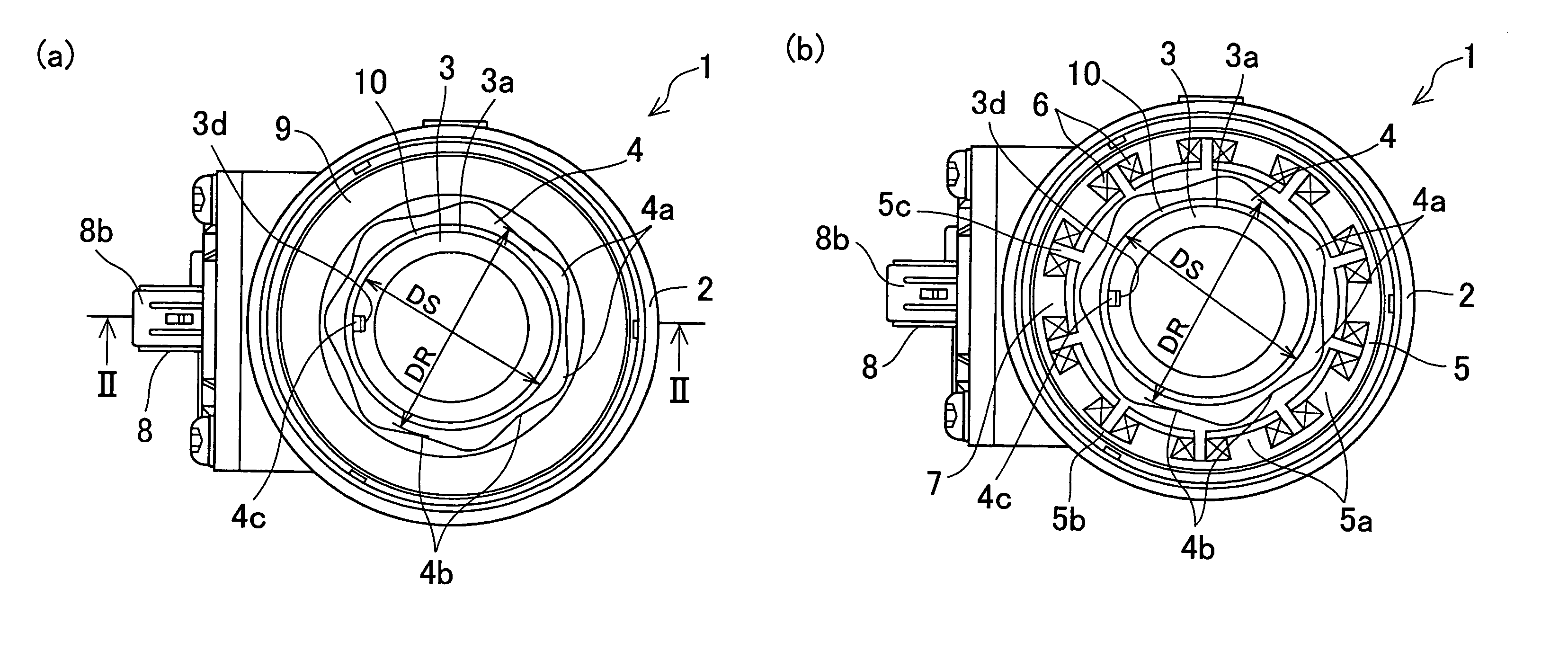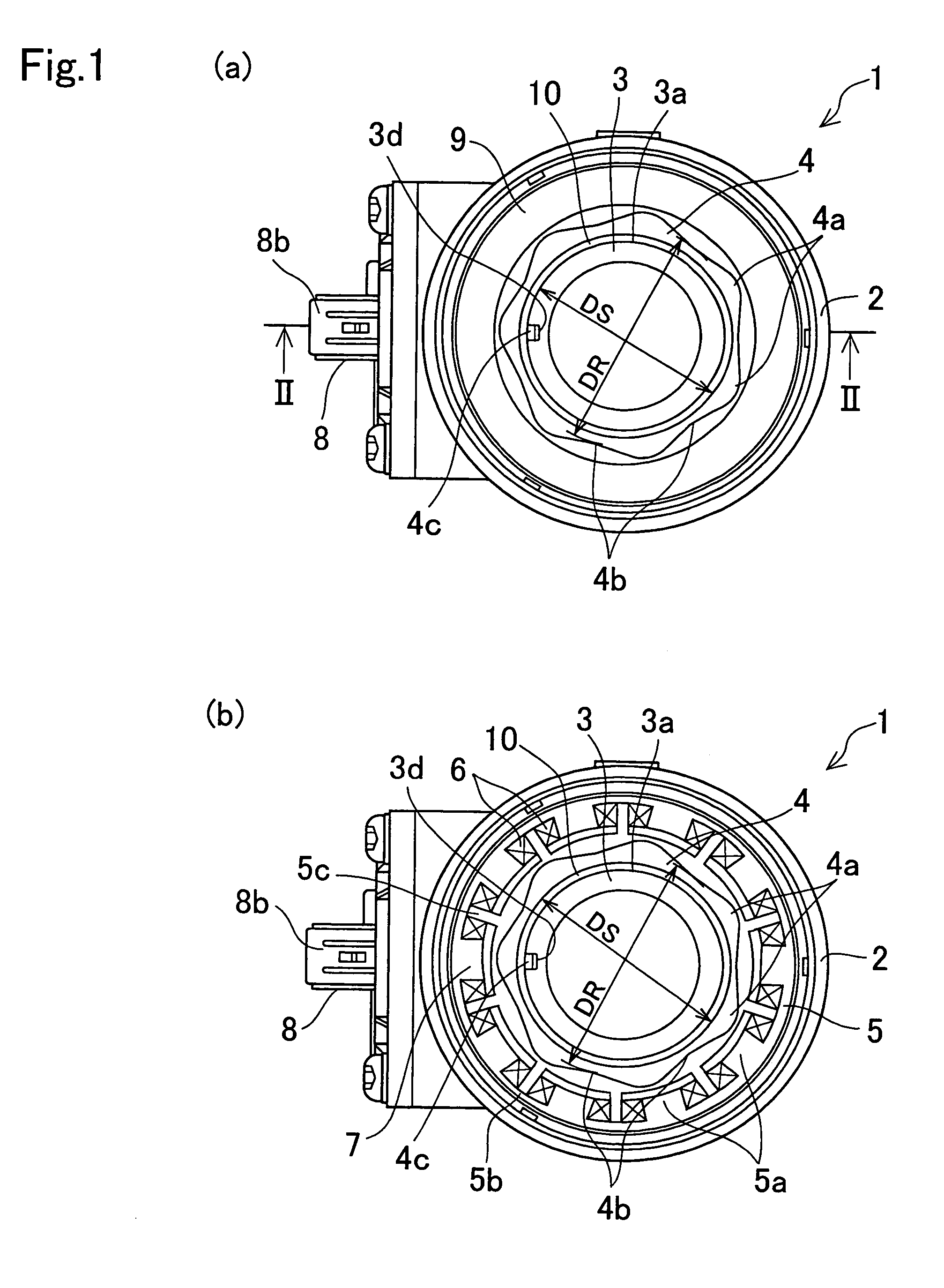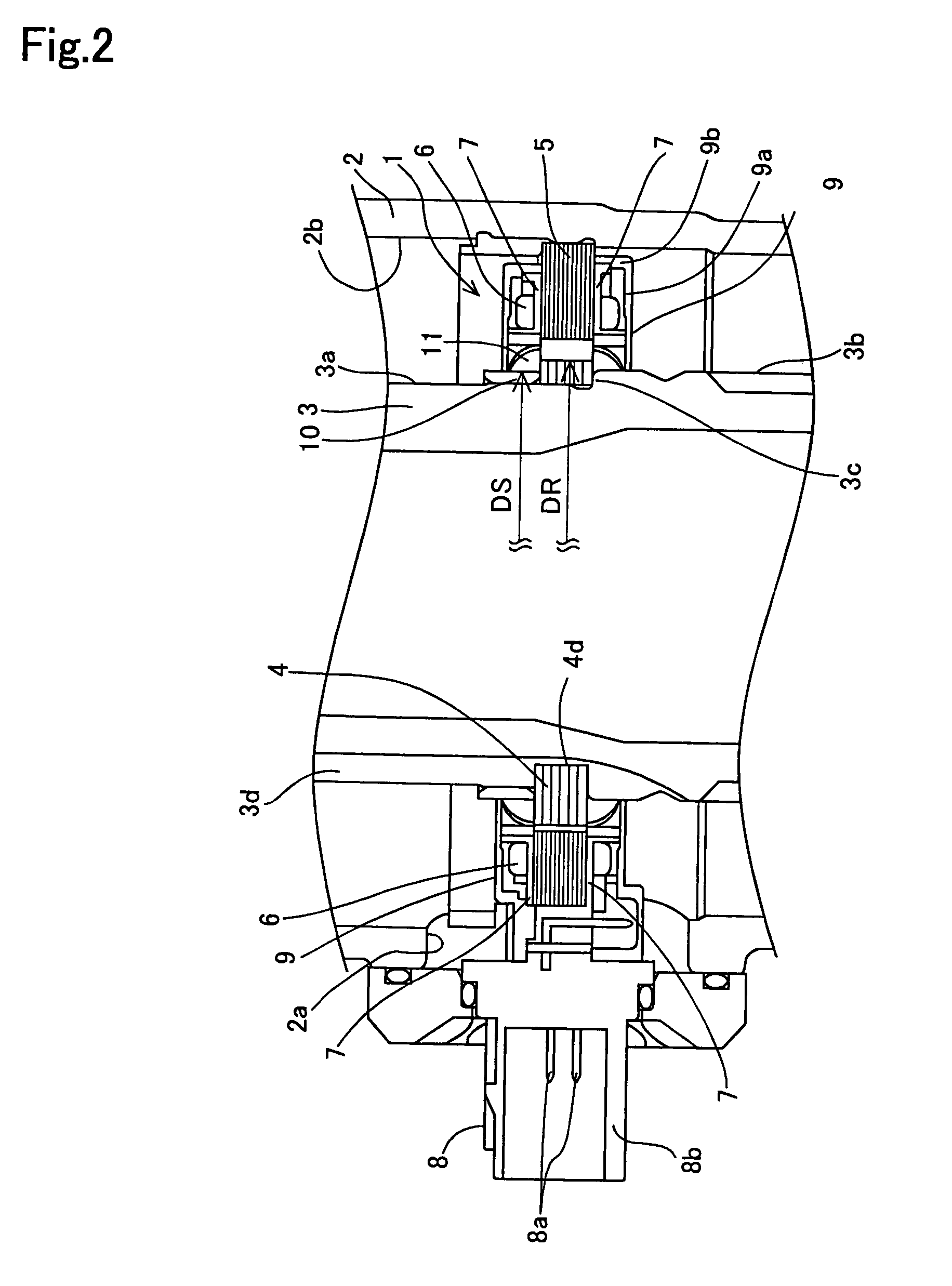Variable reluctance-type resolver
a resolver and resistance type technology, applied in the field of variable resistance type resolvers, can solve the problems of poor detection accuracy, difficult detection of resistance variation, leakage of magnetic flux, etc., and achieve the effect of low or poor detection accuracy
- Summary
- Abstract
- Description
- Claims
- Application Information
AI Technical Summary
Benefits of technology
Problems solved by technology
Method used
Image
Examples
Embodiment Construction
[0027]In the following, preferable embodiment of the present invention will be explained with reference to attached drawings. However, it is noted that the present invention should not be limited to this embodiment.
(Construction)
[0028]In this embodiment, the present invention is applied to an electrical power steering apparatus of a vehicle. As well known, in the power steering apparatus, a steering torque applied to a steering wheel is detected, and required steering assist torque corresponding to the steering torque is generated by the motor to assist the steering. The power steering apparatus comprises a steering wheel, torque sensor for detecting the steering torque, motor for generating the steering assist torque, control device for controlling the motor based on information from the torque sensor, and torque transmit mechanism for transmitting torque from the steering wheel and the motor to the steered wheel (tire).
[0029]The variable reluctance-type resolver (referred simply “...
PUM
 Login to View More
Login to View More Abstract
Description
Claims
Application Information
 Login to View More
Login to View More - R&D
- Intellectual Property
- Life Sciences
- Materials
- Tech Scout
- Unparalleled Data Quality
- Higher Quality Content
- 60% Fewer Hallucinations
Browse by: Latest US Patents, China's latest patents, Technical Efficacy Thesaurus, Application Domain, Technology Topic, Popular Technical Reports.
© 2025 PatSnap. All rights reserved.Legal|Privacy policy|Modern Slavery Act Transparency Statement|Sitemap|About US| Contact US: help@patsnap.com



